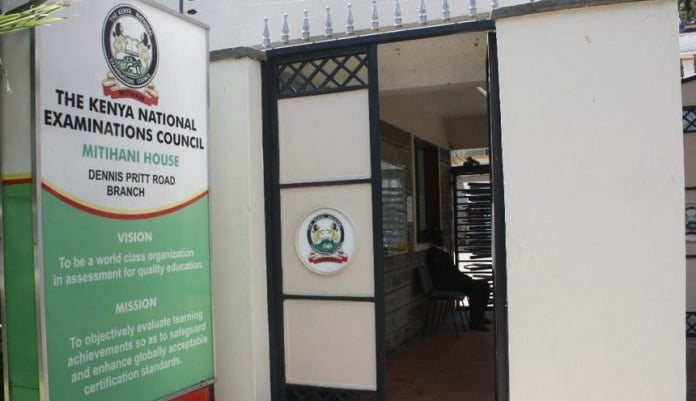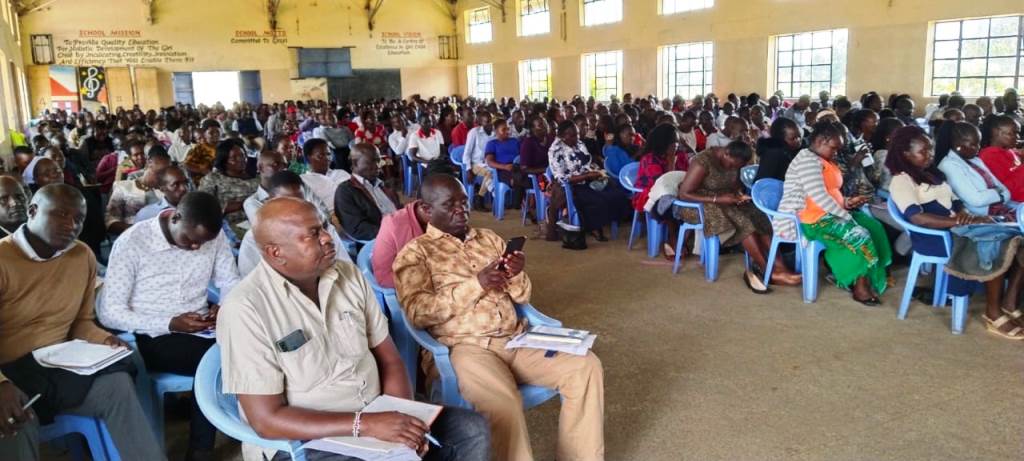By Staff Reporter
Majority of Form Two students have not attained the expected competencies in Mathematics, Biology, Physics, Chemistry, English and Kiswahili in public secondary schools, with majority achieving below the expected mean of 40.
The study conducted by the Kenya National Examination Council (KNEC) in May 2018 and released by the Ministry of Education recently.
English is the subject with expected the Mean of 45.7 while the rest of the subjects fell below the expected mean with Biology registering the lowest mean of 17.7.
Kiswahili had a mean of 37.6 while Physics, Chemistry, Mathematics and Biology had 28.5, 26.0, 23.4 and 17.7 respectively.
The study was meant to determine the Form Two’s level of achievement in Mathematics, Biology, Physics, Chemistry, English and Kiswahili in all public schools in the country.
It further disclosed further that Form Two boys in the country achieved slightly higher in Mathematics as compared to girls with a mean of 24.7 against 22.0.
The trend was the same in Biology and Physics, where boys obtained a mean of 17.9 against 17.5 and 29.1 against 27.9 respectively.
In Chemistry, boys obtained a mean of 26.1 against 25.9. for girl who however, tipped the scales in languages where they achieved slightly higher mean scores than boys at 46.9 and 38.2 against 44.5 and 37.1 respectively.
The study employed the use of achievement tests in Mathematics, Physics, Biology, Chemistry, English and Kiswahili; and the use of questionnaires for data collection.
It captured all 2017 form two students in 2,147 public secondary schools in 110 Sub-counties drawn from 30 Counties targeted for the Kenya Secondary Education Quality Improvement Project (SEQIP).
The targeted counties in the research were described as educationally and economically disadvantaged, while the sub-counties were identified based on their high incidence of poverty, low retention rates at primary level, and low transition rates from primary to secondary level.
The baseline report titled, “Monitoring Leaner Achievement at Form Two Level of Secondary Education in Kenya” reveals that Mathematics had an average mean of 23.4 in the targeted 30 counties which was below the expected mean of 40 which no county achieved.
The counties which recorded the highest achievement levels in Mathematics were Nandi (36.5), Bomet (29.3) and Kwale (26.5), while those with the lowest were Kisii (16.8), Isiolo (15.3) and Tana River (13.7).
Biology average mean for the 30 targeted counties was 17.7, with the highest achievement levels being Tharaka Nithi (39.5), Nandi (31.5) and Kwale (30.1).
Those with the lowest were Kajiado (15.9),Marsabit (15.7) and Tana River(14.1). Physics achieved only an average of 28.5 with the highest achievement being noted in Tharaka Nithi (48.0), Kwale (44.3) and Nandi (42.5); while lowest were Tana River (17.8), Wajir (15.8) and Isiolo (14.6).
Chemistry had an average of 26.0 in the targeted 30 counties, with the leading being Kwale (46.0), Tharaka Nithi (45.0) and Narok (42.0); and the lowest Tana River (21.4), Isiolo (21.3) and Kitui (18.0).
Notably, in the targeted counties in both Mathermatics, Physics, Chemistry, Biology and Kiswahili language, none of the counties achieved the targeted aveage mean of 40.
English, which was the only subject in the study that achieved the expected average mean of 40 recorded 45.7 in the average of the 30 counties, with the leading counties being Nandi (56.3), Murang’a (53.4) and Machakos (53.0),
The lowest English achievement levels were observed in Mandera (35.8), Tana River (31.0), and Wajir (30.6). It is worth noting that in this subject, 22 out of the 30 targeted counties achieved the expected mean of 40.
On the other hand Kiswahili achieved an average mean of 37.6 in the targeted 30 counties, with the highest mean being recorded in Kakamega (45.6), Nandi (45.5) and Kwale (45.2).
The lowest scores were observed in Homa Bay (26.9), Mandera (24.3) and Wajir (21.2), with only 11 out of the 30 targeted counties achieving the expected mean of 40.
In developing the achievement test which used during the study for appropriate weighting and balancing of the test items in terms of their cognitive and competency levels, a Table of Specification (ToS) for each assessment test was used.
This helped in describing the content and skills to be assessed in the various tests and guide the construction of the test items.
For each of the subjects, a blue print describing each of the competency levels was developed.
The format of each of the assessment test was a combination of Selected Response/Multiple Choice Questions and Constructed Response Questions.
The report further shows that none of the sampled students in Kibish and Lagdera sub-counties attained the 50 per cent benchmark in any of the subjects assessed.
In 45 Sub-counties, none of the sampled students attained the 50 per cent benchmark in Mathematics.
In addition, in 31 sub-counties, none of the students attained the 50 per cent benchmark in Kiswahili.
Similarly, in 29, 28, 14 and 7 Sub-counties, none of the sampled students attained the 50 per cent benchmark in Biology, Physics, English and Chemistry respectively.
In 20 sub-counties, they had no student taking Physics and in the entire sample of 5,877 students, only 913 students which represents15.5 per cent took the subject.
This low proportion of students taking Physics is raising concern in on enhancement of STEM and attainment of Kenya’s Vision 2030.
The study was meant to establish levels of achievement in Mathematics, Biology, Physics, Chemistry English and Kiswahili among Form 2 students in 110 sub-counties drawn from 30 counties in Kenya, targeted for the SEQIP interventions.
In addition, it also sought to determine Form 2 students’ and teachers’ levels of knowledge of, and attitudes towards HIV and AIDS and lifestyle diseases and also sought to find out the student, teacher, school and home characteristics influencing learner achievement.






